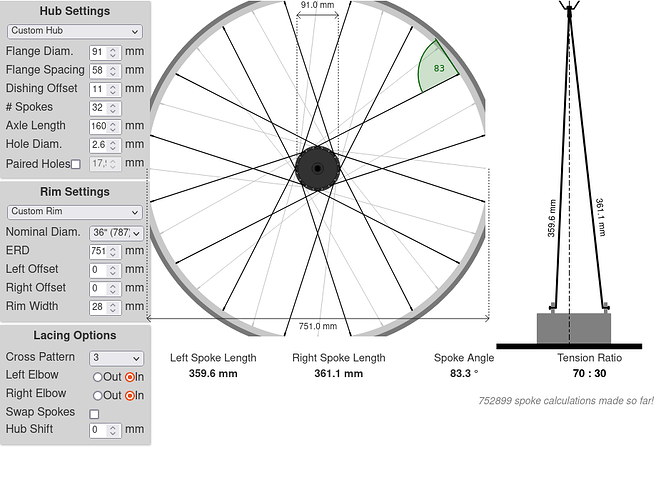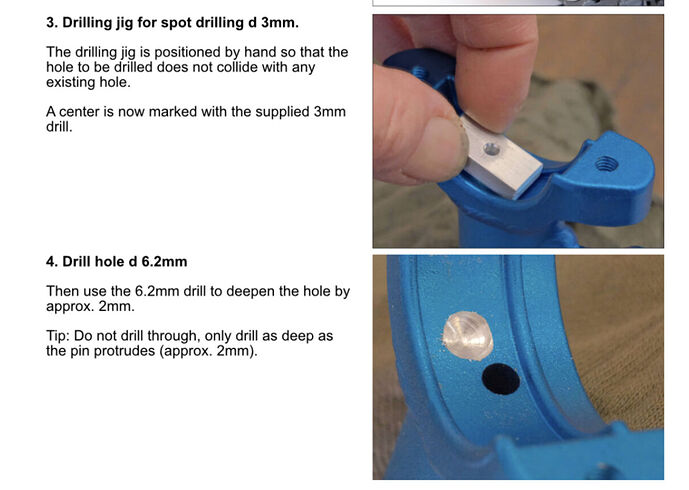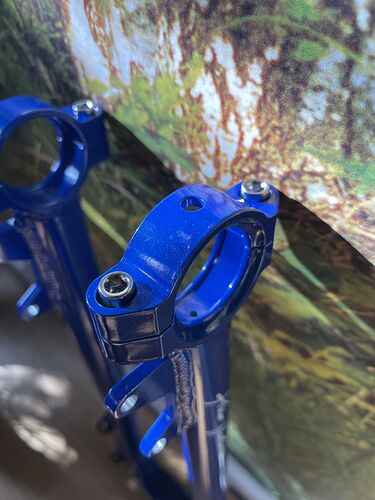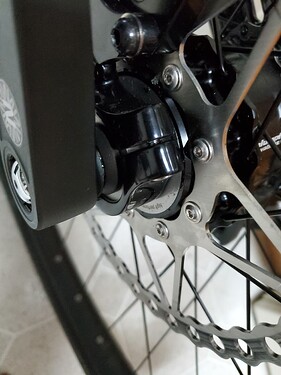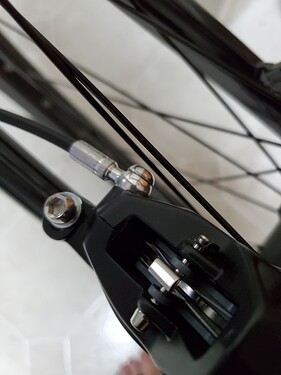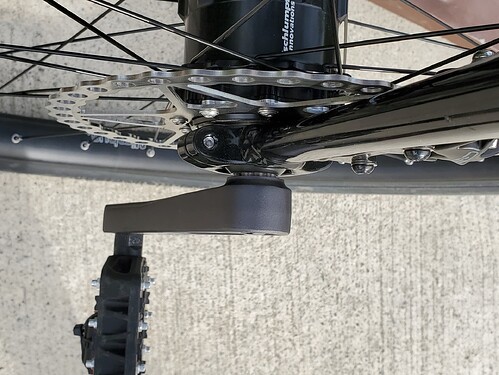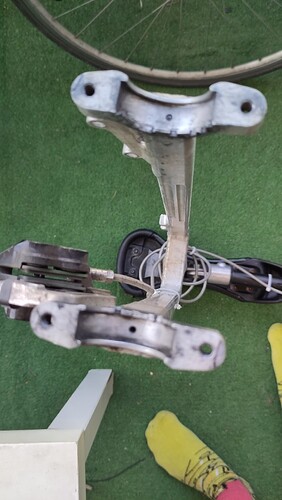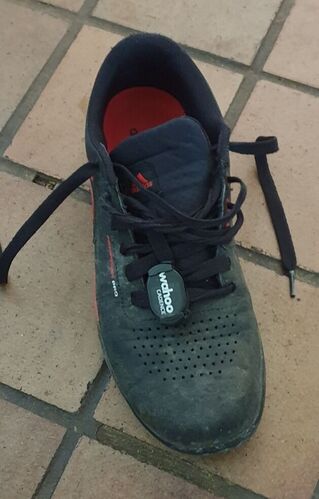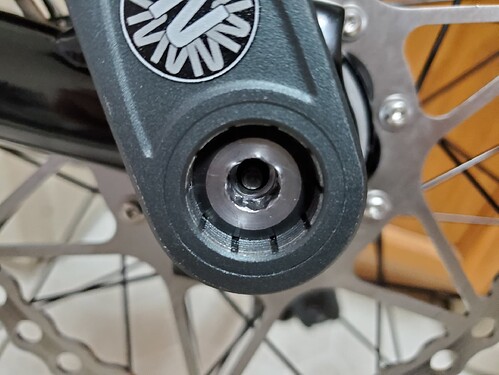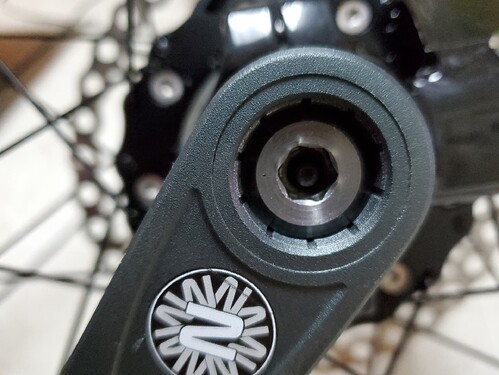I thought I should share details of my initial Schlumpf hub experiences:
It is a 125mm 36H hub, with 203mm disc rotor.
I switched my order to 125 from 100, with the larger rotor, after reading posts above about clearance issues.
The hub is the latest minor variant (slightly different dimensions, longer countersunk rotor bolts and 1mm spacer provided in the package).
I had asked for ‘Eternity’ to be the optional hub engraving and, interestingly, there is a clock produced by Florian with that same name (which measures time in centuries), and so my package included a brochure about that artistic clock!
On first handling the hub it seemed that there was a bit of roughness in the gearing and/or bearings which could be felt when turning by hand an evidenced at about once per revolution on average. I put in a whole extra ampoule of oil and am hoping the hub will “wear in” and become smoother after a while. I’m not too worried about it now - it is less noticeable when the hub is mounted on the frame and spun by one crank.
My build plan is to put the hub on an existing 125mm frame which originally came from a nimbus 32, but lace the hub to a 26in dominator-2 wheel from another existing unicycle in my “stable”.
I re-used the existing small hole in the frame bearing holder and enlarged it to 6mm for the retaining nub on the hub bearing - that was a bit tricky but luckily the existing hole was pretty much central.
Putting the rotor on (temporarily, as it will have to come off again for spoke lacing) I noticed that the 16mm Torx screws (new, longer) seemed to “bottom out” so I temporarily replaced them with 12mm hex socket head screws until I can find some 12mm or 14mm countersunk Torx screws (not easy to find!).
[EDIT: wow, I just got some shorter Torx screws in the mail from Schlumpf Innovations without even asking!]
It was tricky to align the rotor with the existing caliper (using a new adaptor for 203 rotor) in this first test fitting - it seemed to need the 1mm spacer, but I’m pretty sure it won’t be a problem in the build - maybe just a bit of fiddling and filing.
The spokes are a bit of a problem. The non-disc side outer spokes are going to be passing very close to the inner Nimbus frame tube at the hub end of the spoke (as others have also found). So maybe some spoke head washers for the inside heads, or filing or denting the frame (or maybe as long as no spokes actually hit the frame, it will be fine).
I had some DT Swiss Champion spokes cut to size (with a generous thread length just in case), matched with brass 16mm long nipples. But there would be problems with spokes which had the heads on the inside of the flange (particularly the thicker disc-side flange), because they have to bend quite a lot to get to the rim spoking line. This is exacerbated because the J end of the spokes are quite short, as bicycles these days have thin flanges. Luckily I had the old spokes, so I am getting half of these recut and threaded, as the J end on the old ones is nearly 1mm more, giving the spoke room to move. It might look a bit “interesting” with some spokes black and some silver. And I think I will also spoke the disc side the “wrong” way (spoke heads in the dent) to give even move room for the elbow to clear the flange side so it doesn’t have a curve (i.e. a stress region).
[EDIT: I actually put all the spokes in the “right” way (shoulder in the dent) and I noticed that the 9 outer spoke heads on the non-disc side were good candidates for a brass washer.]
For my wheel lacing and truing job, I have attached a cross board to the shadow handle so the frame is steady and stable when inverted on the seat and handle.
When I get to putting the 150mm cranks permanently on, I am currently thinking (hmm) I won’t bother with a spacer, as maybe it could just push into that small bearing protector that is already on the hub. I will also be careful with the bolt (learning from the experience of those coming before me!).
So that’s it so far. I probably won’t finish it for a while due to imminent holidays. Good luck to anyone on the same journey. Sometimes I think “why did I do this? my Nimbus Oracle 27.5 is the perfect unicycle”, but then if I didn’t try the Schlumpf, I would have always been wondering what it would be like.
